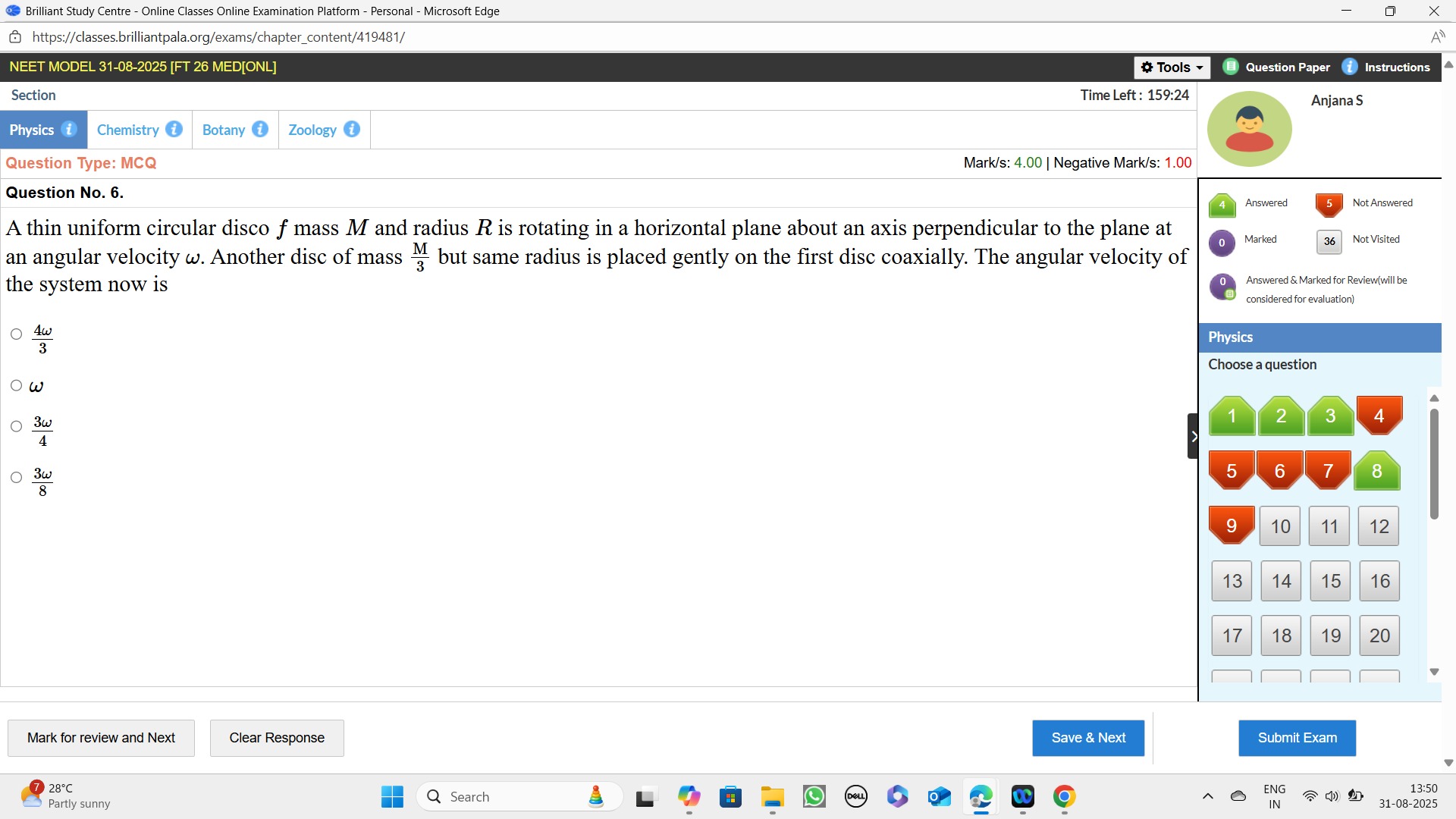Question
Question: A thin uniform circular disco f mass $M$ and radius $R$ is rotating in a horizontal plane about an a...
A thin uniform circular disco f mass M and radius R is rotating in a horizontal plane about an axis perpendicular to the plane at an angular velocity ω. Another disc of mass 3M but same radius is placed gently on the first disc coaxially. The angular velocity of the system now is

34ω
ω
43ω
83ω
43ω
Solution
The principle of conservation of angular momentum is applied. Initial angular momentum of the first disc: Li=I1ω=21MR2ω. The second disc is initially at rest. Moment of inertia of the first disc: I1=21MR2. Moment of inertia of the second disc: I2=21(3M)R2=61MR2. The total moment of inertia of the combined system is If=I1+I2=21MR2+61MR2=32MR2. By conservation of angular momentum, Li=Ifω′, where ω′ is the final angular velocity. 21MR2ω=32MR2ω′. Solving for ω′ gives ω′=43ω.
